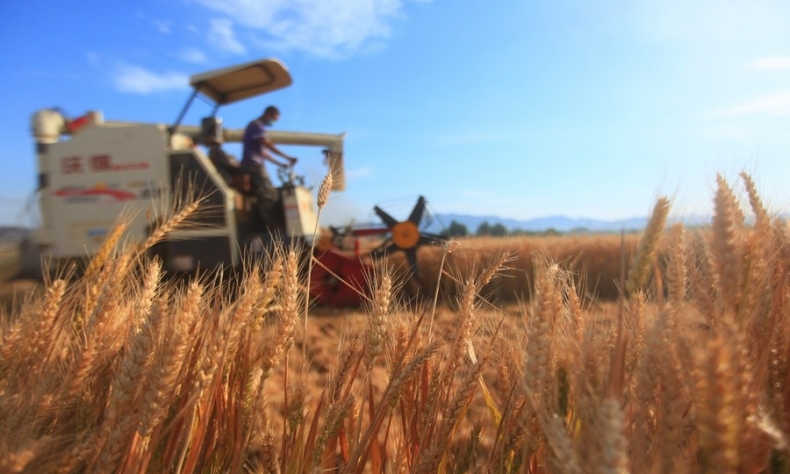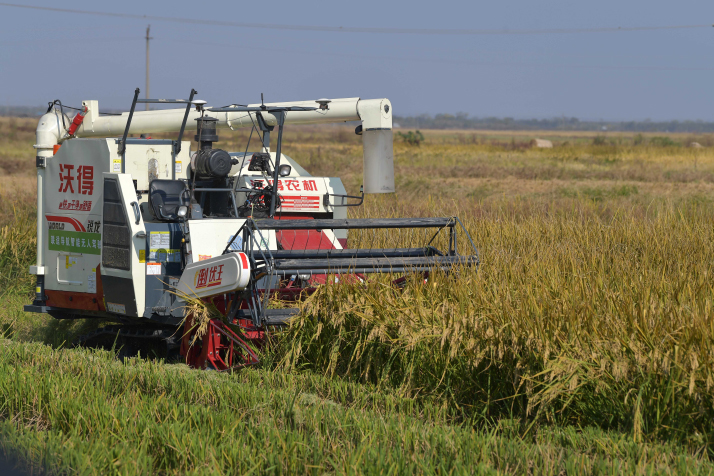Realizing Rural Revitalization

Making agriculture a cornerstone of policymaking is directly connected to all-round rural revitalization in China.
Agricultural and rural development has always been an important issue on the agenda of China’s annual sessions of the National People’s Congress, and the National Committee of the Chinese People’s Political Consultative Conference, which usually take place in early March every year.
Prior to the annual sessions this year, Chinese President Xi Jinping delivered a keynote address at the two-day annual Central Rural Work Conference in December 2021, which shows the areas of agricultural and rural development in China are fundamental in terms of policymaking.
What has been the experience of China in advancing rural revitalization and consolidation of agricultural output? Which lessons can possibly be learned for South Africa as it grapples, seemingly endlessly, with the “historical injustice” of land deprivation and food insecurity?
Xi declared in April 2021 that food security is “an important foundation for national security.” China’s 14th Five-Year Plan (2021-25) establishes a linkage between the two goals, stating clearly the country’s social and economic objectives. This includes maintaining yearly grain production of more than 650 million tons.
It is not surprising that in 2021, China’s grain output reached close to 683 million tons, an increase of 13.4 million from 2020. Most importantly, grain output has recorded growth for seven consecutive years. With this in mind, the Central Rural Work Conference set the target for 2022 at more than 650 million tons.
Given the fact that China has experienced periods of food shortage in the past, Xi noted that at all times, “the rice bowl of the Chinese people must be held firmly in our own hands. Our rice bowl should be filled primarily by Chinese cereals.”
As a developing country, China is acutely aware how failure to guarantee food security and rural revitalization can be detrimental to social stability. It is therefore encouraging that the Central Rural Work Conference was assured that grain, rice and wheat production and outputs will be able to meet China’s growing domestic demand. Of course, this hinges to a great extent on ensuring that domestic food prices are relatively stable and China gradually ceases its over-reliance on certain food imports such as soybeans.
At the Central Rural Work Conference, it was reiterated that the country remains intent on building 6.67 million hectares of high-standard farmland by boosting the relevant industries and accelerating rural-urban integration.

Making agriculture a policy and programmatic cornerstone for China is directly connected to all-round rural revitalization. China also aims to build on its unprecedented victory in poverty alleviation whereby the country has lifted, in the past eight years, more than 98 million rural people out of poverty and removed 128,000 villages and 832 impoverished counties out of poverty.
As South Africa grapples with hunger and food insecurity, there is much to admire and learn from China. The Presidential Advisory Panel on Land Reform and Agriculture, in a report released in May 2019, was unambiguous in addressing the historical injustice.
The report identified the slow land reform as a bottleneck in the post-1994 efforts at nation building.
Some of the central factors mentioned in the report that need to be attended to urgently include “insecurity of tenure that results in economic exclusion (whereby) South Africa has over 60 percent of citizens whose land/property rights are neither recorded nor registered.”
It does not augur well for social cohesion when “the majority of South Africans are either asset-poor or sit with unrecorded or devalued assets.” This runs counter to the aim of delivering the democratic dividend and dignity of life to black farmers who constitute a mere 10 percent of commercial producers, as highlighted by the National Agricultural Marketing Council.
Therefore, there is much work to be done to realize the goals set out in Chapter 6 of the National Development Plan.
Quite clearly, China has been doing something right in raising the incomes of rural residents in 11 consecutive years. This narrowing of the urban-rural divide has also seen China building and upgrading more than 2 million km of rural roads between 2012 and 2019, and in the process also connecting 51,000 villages with concrete roads.
Like almost every other record achievement in China, it boils down to, first, policy consistency that is implemented and monitored for its impact regularly, second, political and executive will that is communicated and transmitted from provinces to municipalities, and third, bottom-up involvement of people themselves as drivers of their own development and transformation.
These non-negotiables in China are not unique to that country, but are universal values and principles that can be replicated in South Africa.
The author is a Sinologist and founder of SELE Encounters.
 Facebook
Facebook
 Twitter
Twitter
 Linkedin
Linkedin
 Google +
Google +










